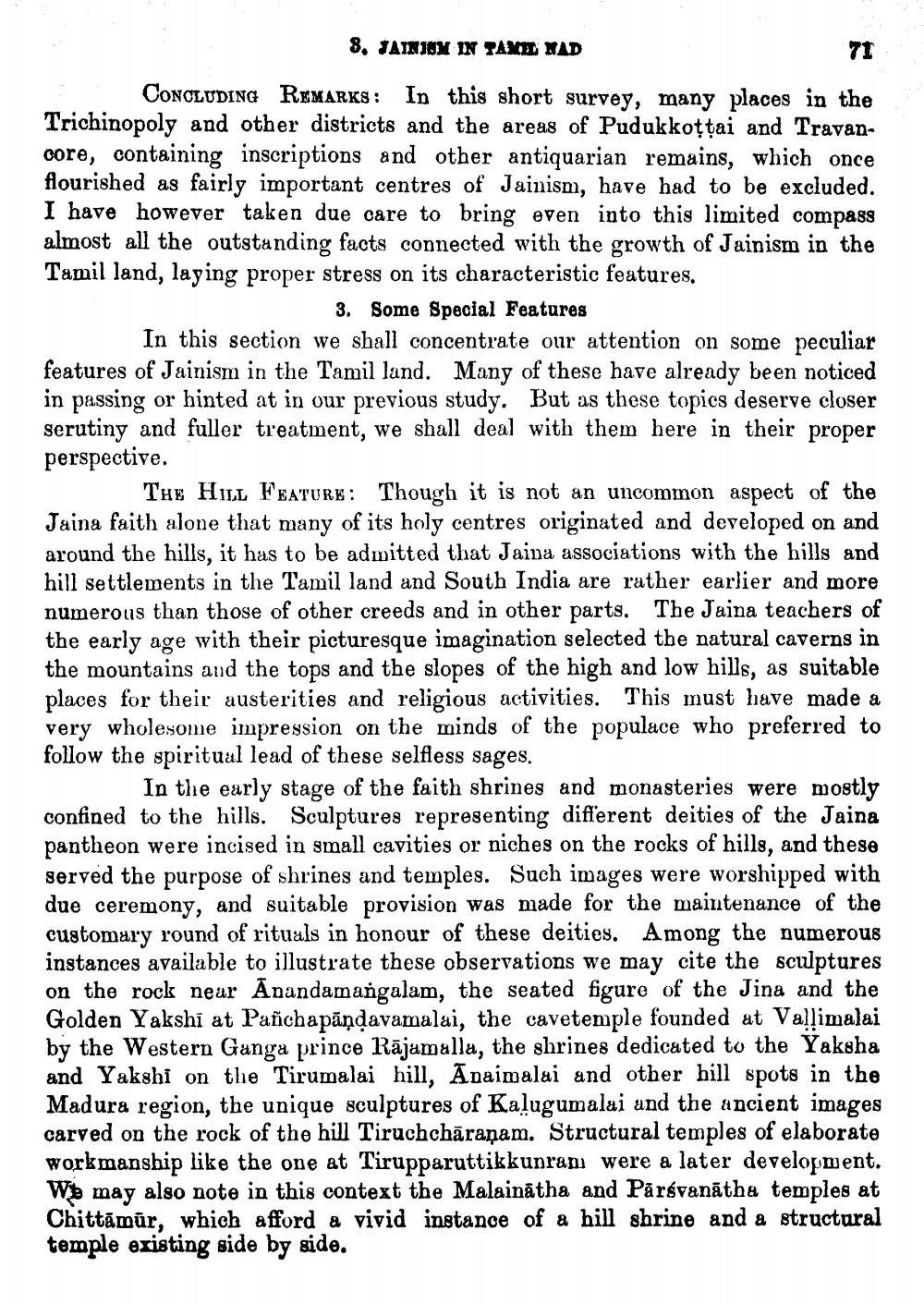________________
8. JAINISM IN TAMIL NAD
CONCLUDING REMARKS: In this short survey, many places in the Trichinopoly and other districts and the areas of Pudukkottai and Travancore, containing inscriptions and other antiquarian remains, which once flourished as fairly important centres of Jainism, have had to be excluded. I have however taken due care to bring even into this limited compass almost all the outstanding facts connected with the growth of Jainism in the Tamil land, laying proper stress on its characteristic features.
71
3. Some Special Features
In this section we shall concentrate our attention on some peculiar features of Jainism in the Tamil land. Many of these have already been noticed in passing or hinted at in our previous study. But as these topics deserve closer serutiny and fuller treatment, we shall deal with them here in their proper perspective.
THE HILL FEATURE: Though it is not an uncommon aspect of the Jaina faith alone that many of its holy centres originated and developed on and around the hills, it has to be admitted that Jaina associations with the hills and hill settlements in the Tamil land and South India are rather earlier and more numerous than those of other creeds and in other parts. The Jaina teachers of the early age with their picturesque imagination selected the natural caverns in the mountains and the tops and the slopes of the high and low hills, as suitable places for their austerities and religious activities. This must have made a very wholesome impression on the minds of the populace who preferred to follow the spiritual lead of these selfless sages.
In the early stage of the faith shrines and monasteries were mostly confined to the hills. Sculptures representing different deities of the Jaina pantheon were incised in small cavities or niches on the rocks of hills, and these served the purpose of shrines and temples. Such images were worshipped with due ceremony, and suitable provision was made for the maintenance of the customary round of rituals in honour of these deities. Among the numerous instances available to illustrate these observations we may cite the sculptures on the rock near Anandamangalam, the seated figure of the Jina and the Golden Yakshi at Pañchapāņḍavamalai, the cavetemple founded at Vallimalai by the Western Ganga prince Rajamalla, the shrines dedicated to the Yaksha and Yakshi on the Tirumalai hill, Anaimalai and other hill spots in the Madura region, the unique sculptures of Kalugumalai and the ancient images carved on the rock of the hill Tiruchcharanam. Structural temples of elaborate workmanship like the one at Tirupparuttikkunram were a later development. We may also note in this context the Malainatha and Parsvanatha temples at Chittämür, which afford a vivid instance of a hill shrine and a structural temple existing side by side.




